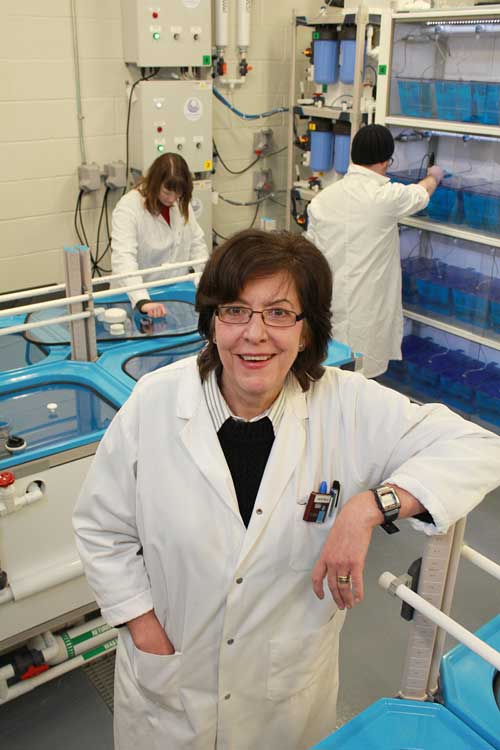A University of Lethbridge ecotoxicology expert is part of a new province-wide research institute dedicated to examining the impact of harmful chemicals in our environment.
Dr. Alice Hontela, a U of L biological sciences professor and Canada Research Chair in ecotoxicology, is among the researchers who make up the Institute of Environmental Toxicology (IET). Housed at the University of Calgary, the IET is a multidisciplinary team that will include biologists and engineers from the universities of Lethbridge, Calgary and Alberta, as well as scientists in municipal and federal laboratories. Its mandate is to develop new and improved technologies for effective risk assessment and remediation of contaminated sites.

"Our research will help provide decision makers and the public with scientific information on the nature and magnitude of environmental contaminants, and offer some solutions to address this important global challenge," says Hontela.
Among other research collaborations, Hontela is part of MITHE (Metals in The Human Environment) strategic network and the Alberta Institute for Water Research. She says climate change and increasing industrial activity (especially farming and mining) are not only affecting the volume of available water, but the concentration of pollutants that exist in the water.
Through lab and fieldwork, Hontela studies the endocrine systems of different fish to determine the effects of certain pollutants. She explains that some chemicals are safe at low doses (like selenium, which our bodies need), but toxic at higher concentrations. See the following video for a look at Hontela's research.
Since pollutants, like pharmaceuticals, are difficult or impossible to remove with filtration, the health of both human and aquatic species requires keeping these chemicals at non-toxic levels.
"Alberta is a province that is changing very quickly, and we have to find new ways to deal with our water and our pollutants," says Dr. Hamid Habibi, professor in the Department of Biological Sciences at the University of Calgary and the IET director.
An environment free of harmful chemicals is the group's top priority. IET will study the nature, fate and persistence of chemicals in the environment as well as the remediation of terrestrial and aquatic contamination activities.
Habibi says that the causes of contamination are wide ranging and could include pollutants released from wastewater treatment plants and landfills, such as plasticizers, surfactants, flame-retardants, drugs, personal care and industrial products. In addition, there are heavy metals or other toxins resulting from mining activities and electronics consumerism, agricultural runoff, oil sands operations and tailings ponds.
This story first appeared in the Legend. For a full look at the January issue of the Legend in a flipbook format, follow this link.
